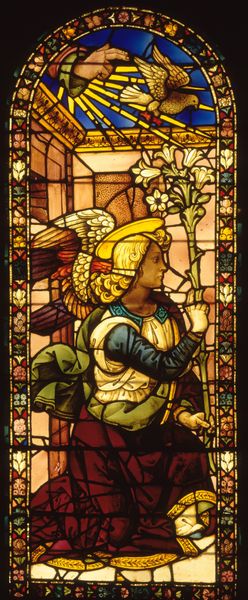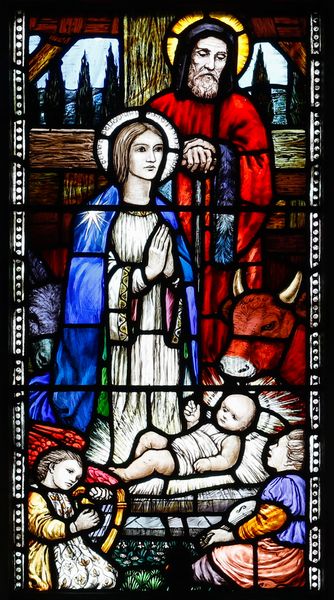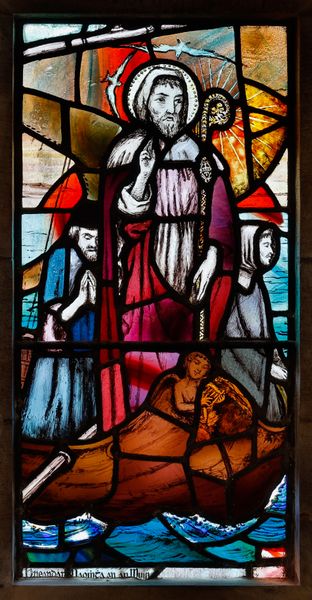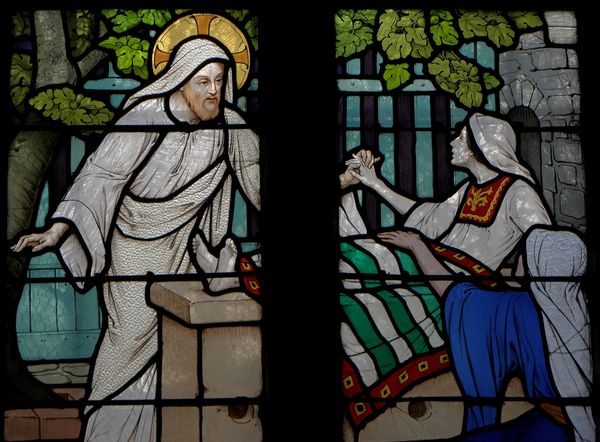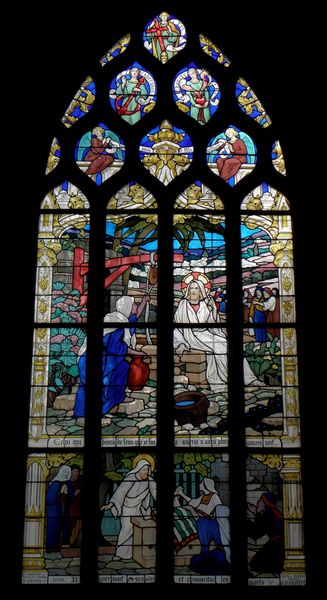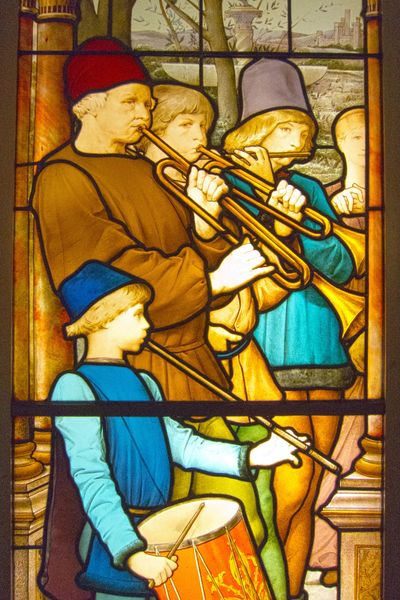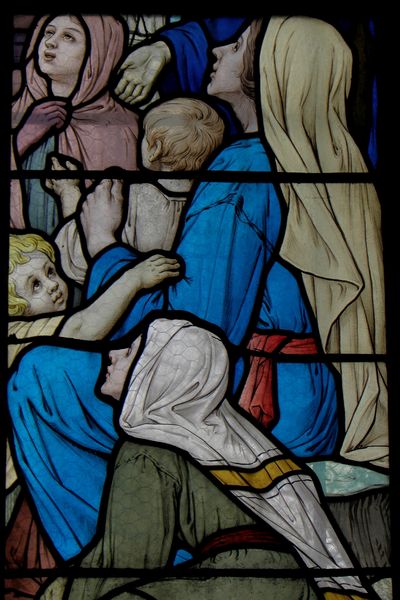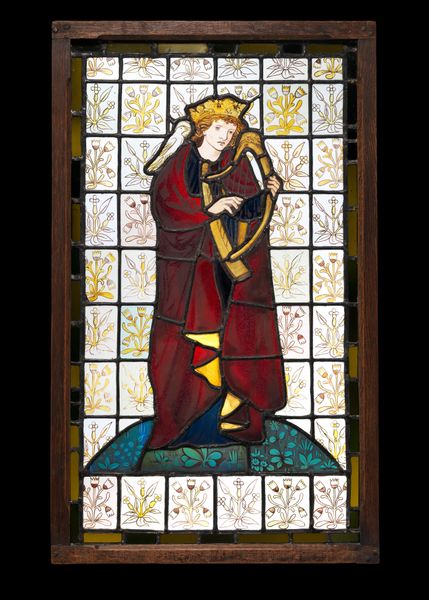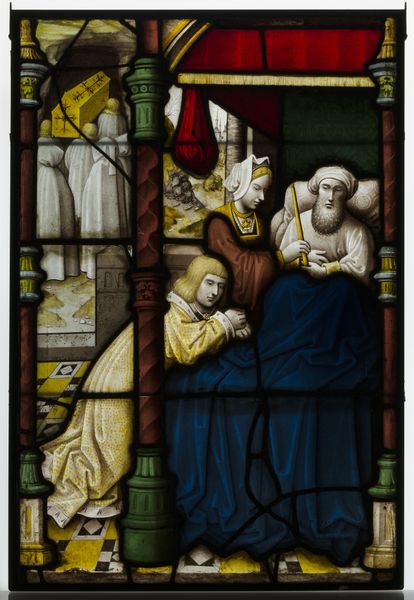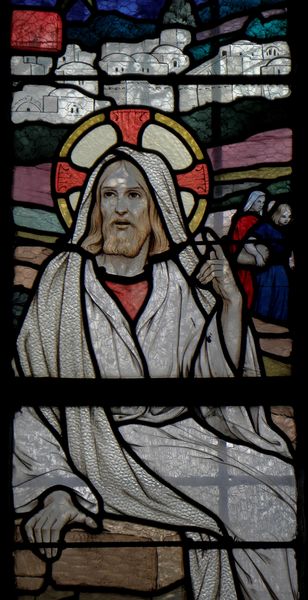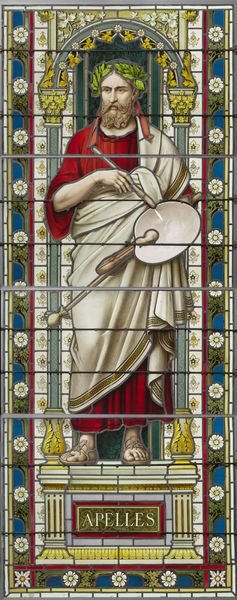
glass
#
eye bird view
#
natural stone pattern
#
loose pattern
#
stain glass
#
geometric pattern
#
glass
#
tile art
#
abstract pattern
#
dark focal point
#
central focal point
#
decorative-art
#
motif
Dimensions: overall: 199.4 × 78.8 cm (78 1/2 × 31 in.) framed: 215.9 × 89.85 × 4.76 cm (85 × 35 3/8 × 1 7/8 in.)
Copyright: National Gallery of Art: CC0 1.0
Curator: Immediately, I’m struck by the contemplative mood, the deep blues, reds, and yellows. It has a somber feel but is radiant. The composition leads the eye down and around. What a stunning piece. Editor: Indeed. The stained-glass panel, “The Virgin Annunciate,” attributed to Giovanni di Domenico and created sometime between 1498 and 1503, truly embodies the delicate balance of solemnity and grace that's characteristic of the Renaissance period. These windows offer not only artistry but religious storytelling and served as instruments for conveying religious narratives. Curator: The way the artist has depicted the Virgin’s downward gaze, it signifies humility, yet her halo suggests otherwise. Also, a question about what appears above her. Editor: Ah yes, that’s likely representative of the Holy Spirit. Visually, that light evokes divine illumination. The Annunciation is never simply about a message, it's about a transformational moment, a divine encounter, all caught up in powerful symbolism. The gold patterns evoke sacred spaces, reminding me of Byzantine mosaics. Curator: These artistic choices position Mary within a larger socio-cultural context, really influencing her portrayal within Florentine society. Her representation became the cultural understanding of femininity. Churches are more than just spaces of religious devotion; they're pivotal public arenas where these cultural ideals are reinforced and reimagined. How do we know that glass paintings would not portray ideals more clearly? Editor: True, stained glass also provides symbolic weight in cathedrals. However, if one studies religious symbolism during the Renaissance, a consistent set of beliefs is presented, and one recurring element that one observes in every iteration is that light is equivalent to illumination. And here, light is depicted through art. Curator: Certainly. This highlights how this medium carries so much symbolic power and reveals the artist's unique interpretation. Thanks for elucidating how it would resonate across time. Editor: It’s my pleasure. Studying this window today really demonstrates a lot about Giovanni di Domenico's contribution to Florentine sacred life.
Comments
No comments
Be the first to comment and join the conversation on the ultimate creative platform.

